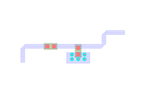skatefast08
Full Member level 4

there are many specifications needed when I get a quote from a PCB manufacturer, but I don't know which materials are important to have and not have when getting a 2.4 GHz LNA manufactured. A few things specified are for example silkscreen and solder mask, should I leave out those materials, could they damage the performance of a 2.4 GHz LNA? I used 4pcb and I specified the parameters as shown:

please let me know if there is anything that might concern the performance of my LNA. here is a picture of my PCB design in Eagle also:

Thanks

please let me know if there is anything that might concern the performance of my LNA. here is a picture of my PCB design in Eagle also:

Thanks
Last edited by a moderator:





